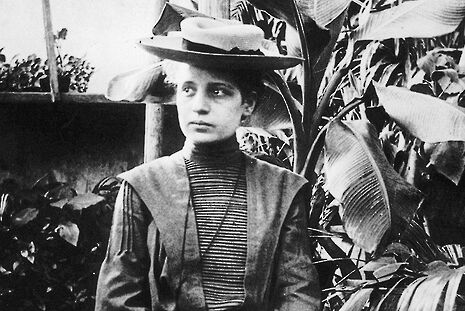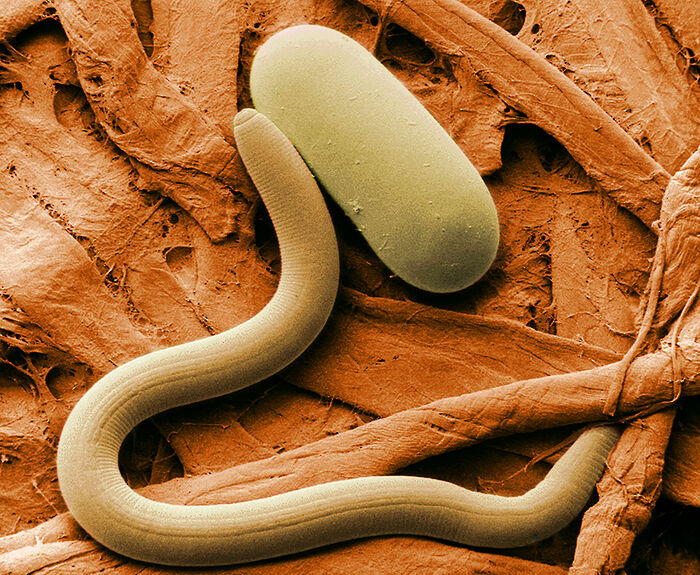Meitner’s Matilda Effect
Science columnist Johanna Friege investigates the impact of gender on the life of the eminent physicist Lise Meintner

There’s a point in everyone’s life when something they’ve achieved has been attributed to someone else, whether it’s someone repeating your joke at a party (and, deplorably, getting all the laughs), gaining credit for the research you did on a group presentation, or even just your sibling getting praise for how well you did the dishes after dinner. In science, it’s no different. The Matthew effect, first described by Richard Merton in 1968, is when a prominent scientist gets more credit than a lesser-known colleague, even if their work is shared. No doubt an interesting sociological phenomenon, the topic of this week’s column is its sister, the Matilda effect, when contributions of female scientists in research are denied and instead attributed to their male colleagues.
“She had no official status at the university, despite having a doctorate, because women weren’t allowed to matriculate in Prussia”
Historically, scientific discoveries have been dominated by men due to the difficulties women faced not only receiving higher education, but gaining the qualifications and access to resources necessary to conduct competitive research. Lise Meintner, an Austrian-born Jewish woman, had to end her formal education at the age of 14 in Vienna until women were allowed to matriculate in 1901; she was the second woman to receive a PhD in Austria. When she moved to Berlin in 1907 to study with Max Planck at the Friedrich-Wilhelms-Universität Berlin, she had no official status at the university, despite having a doctorate, because women weren’t allowed to matriculate in Prussia.
She was refused lab access to conduct research in the Physics Faculty, and thus installed lab equipment in a carpenter’s workshop in the university basement with her colleague, Otto Hahn, where the two of them conducted research on nuclear physics and radioactivity until Hahn was appointed director of the Department of Radiochemistry in the university’s new Kaiser-Wilhelms-Institut in 1912. Meanwhile, Meitner was an accepted part of the Berlin physics scene, but it wasn’t until 1922 that she was able to become a professor of physics; she was the first woman in the Weimar Republic to habilitate.
Meitner’s scientific career was also considerably impeded by the political climate at the time. In 1938, Germany annexed Austria, which made Meitner a German citizen; and as a Jew, put her into considerably more danger of deportation. Thus in 1938 she was forced to flee Berlin head-over-heels to Sweden, where her nephew Otto Frisch lived. Meitner and Hahn, as well as his assistant, Fritz Straßmann, had been in the middle of conducting elaborate research on transuranic elements, which had been proposed by Enrico Fermi in 1934. These, he said, were elements that were heavier than uranium (the heaviest naturally-occurring element), which could be formed by bombarding uranium atoms with neutrons, as this led to a proton gain. Although he was wrong, Meitner, Hahn and Straßmann set to work to explore the possibility of transuranic elements in a scientific race against teams led by Irène Joliot-Curie in France, Ernest Rutherford in Britain and Fermi in Italy.
In Sweden, Meitner continued correspondence with Hahn and Straßmann by mail. They discussed the progress of their research, and Meitner suggested new experiments from her position in exile. In Stockholm, she began work at the Siegbahn Institute. However, she received very little support, partially due to Manne Siegbahn’s prejudice against women in science. In 1938, Hahn and Straßmann bombarded uranium with slow-moving neutrons, and (surprisingly for them), consistently produced barium, a much lighter element than uranium. This clearly went against the previously held scientific dogma that the largest particle a nucleus could emit was an alpha particle. Hahn wrote to Meitner, asking whether she could “suggest some fantastic explanation”.
And she delivered, publishing a paper in science’s leading journal Nature in 1939 by Meintner and Frisch. In the paper, Meitner first coined the term nuclear fission, based on Hahn’s discovery of the uranium split, as well as Bohr’s liquid drop model of the atom. The idea was that uranium nuclei bombarded by neutrons split to form barium and krypton, emitting neutrons and a considerable amount of energy. Nuclear fission theory would eventually lead to the Manhattan Project and the construction of the atomic bomb, and also won Hahn the Nobel Prize for Chemistry in 1944. Meitner, on the other hand, received comparatively little for the decisive work she had contributed to the development of the theory.
In the 1990s, the sealed records of the Nobel Committee’s proceedings were made public, and several things regarding Meitner’s missed nomination became public. Firstly, the structure of the Nobel committees wasn’t suited to assessing interdisciplinary work, which Hahn (a chemist) and Meitner’s (a physicist) research had clearly been. Secondly, the members of the Chemistry Committee were either unable or unwilling to judge Meitner’s contribution fairly, perhaps due to her position as a woman. Finally, during World War II, Swedish scientists relied on their own limited expertise in awarding Nobel Prizes, and Siegbahn’s potentially prejudiced report on Meitner’s role in the discovery of nuclear fission may have played a significant role in the decision.
If Meitner hadn’t been Jewish, she would have been able to stay in Berlin and engaged with the team’s research on radioactivity in more depth. However, the fact of the matter is that if Meitner hadn’t been a woman, she would have faced far fewer barriers and prejudices in her education and in her scientific career. She’d have had the opportunity to develop her career sooner, faster and further in order to reach her full potential as a physicist. Perhaps her flight to and subsequent work in Sweden would have been easier and more supported by the Siegbahn Institute. Perhaps she would have been taken more seriously as a physicist, as well as her work more widely recognized and appreciated. Meitner is considered the most significant woman scientist in the 20th century, but the question remains at which point she would be considered amongst the most significant scientists in the 20th century, regardless of gender
 Comment / Plastic pubs: the problem with Cambridge alehouses 5 January 2026
Comment / Plastic pubs: the problem with Cambridge alehouses 5 January 2026 News / Cambridge businesses concerned infrastructure delays will hurt growth5 January 2026
News / Cambridge businesses concerned infrastructure delays will hurt growth5 January 2026 News / New movement ‘Cambridge is Chopped’ launched to fight against hate crime7 January 2026
News / New movement ‘Cambridge is Chopped’ launched to fight against hate crime7 January 2026 News / AstraZeneca sues for £32 million over faulty construction at Cambridge Campus31 December 2025
News / AstraZeneca sues for £32 million over faulty construction at Cambridge Campus31 December 2025 Interviews / You don’t need to peak at Cambridge, says Robin Harding31 December 2025
Interviews / You don’t need to peak at Cambridge, says Robin Harding31 December 2025










